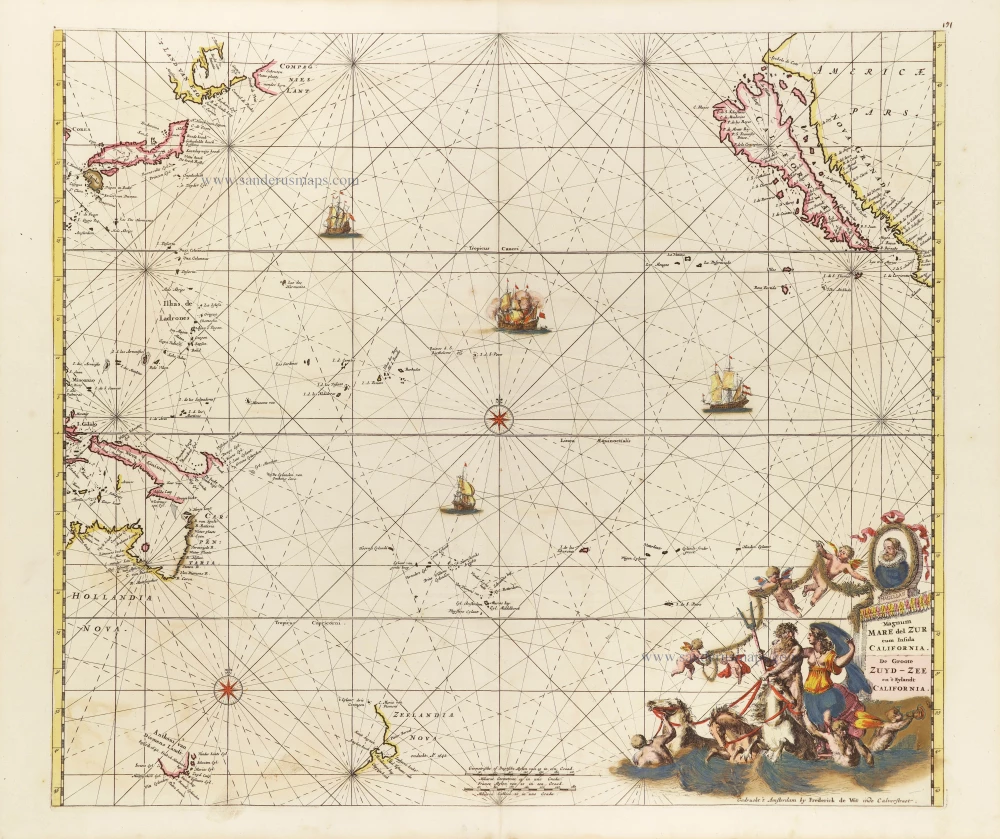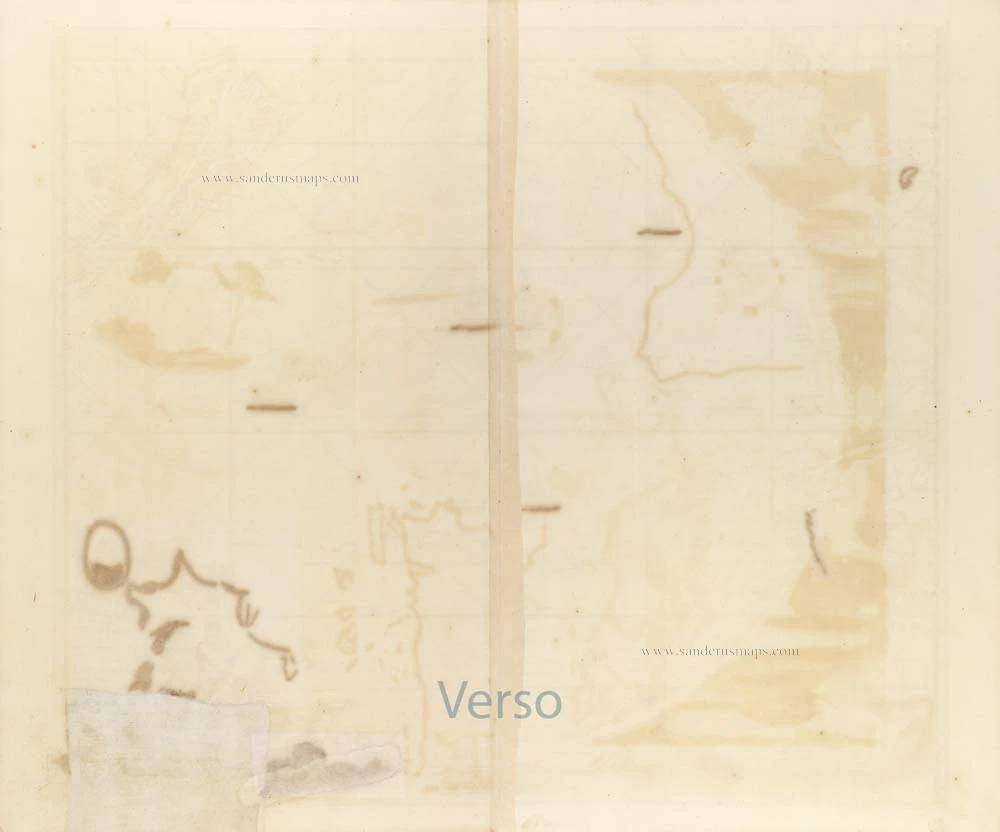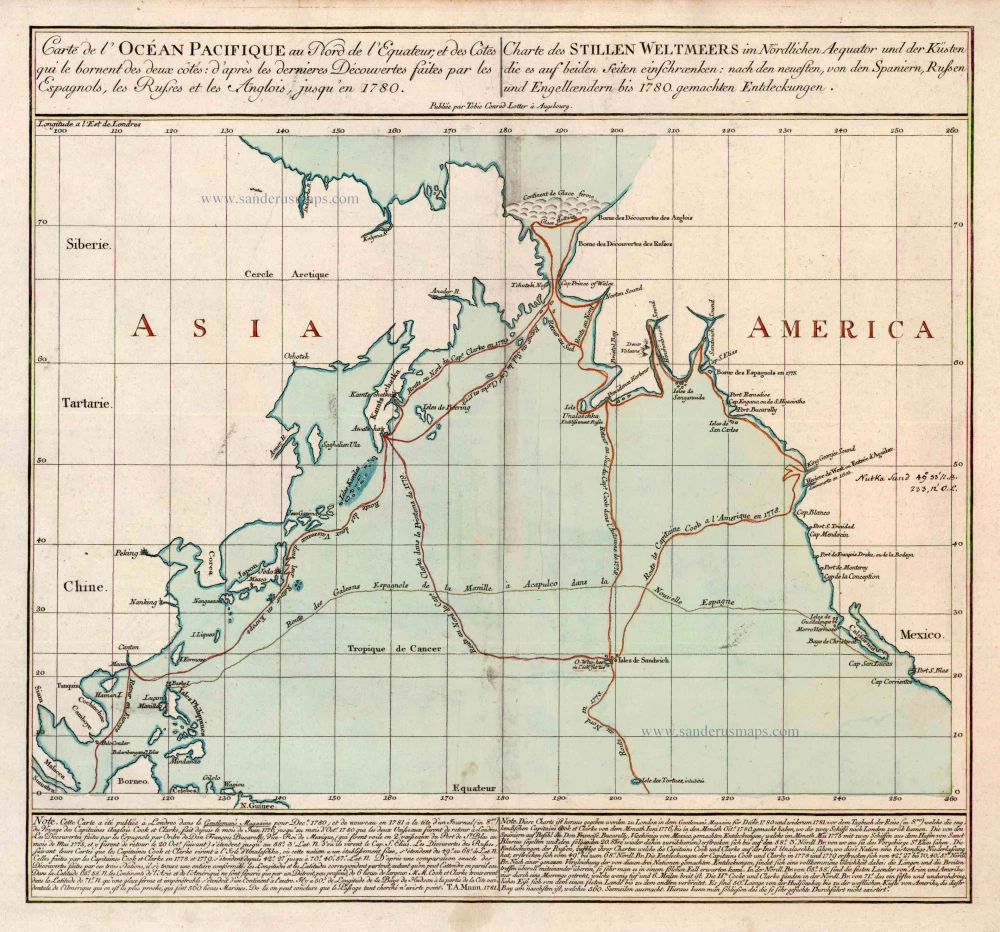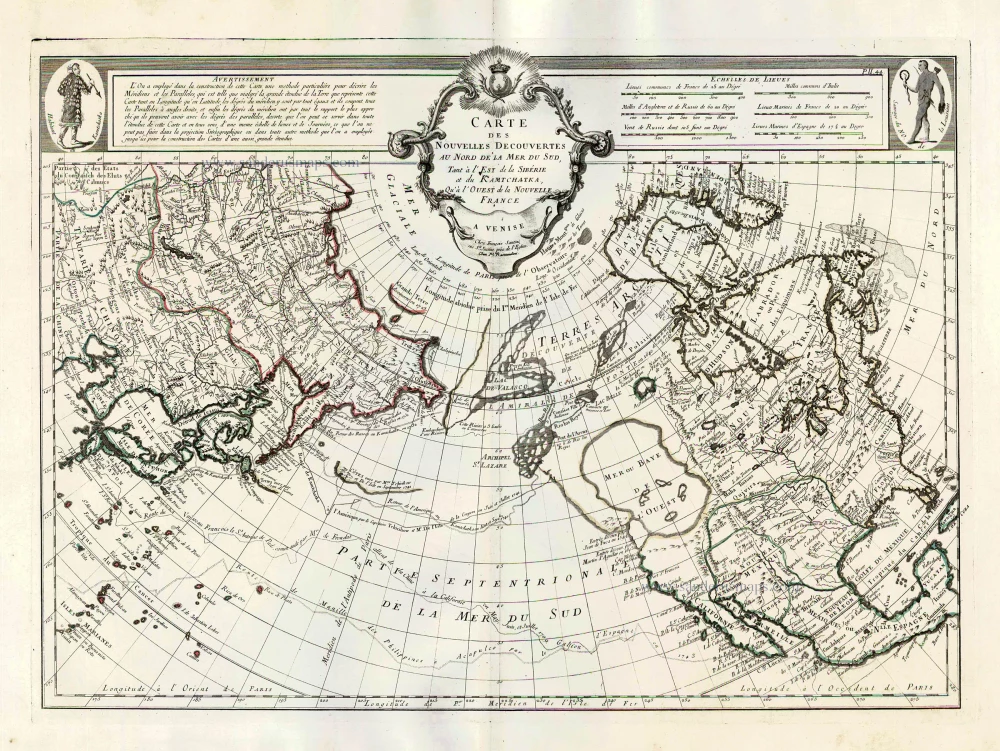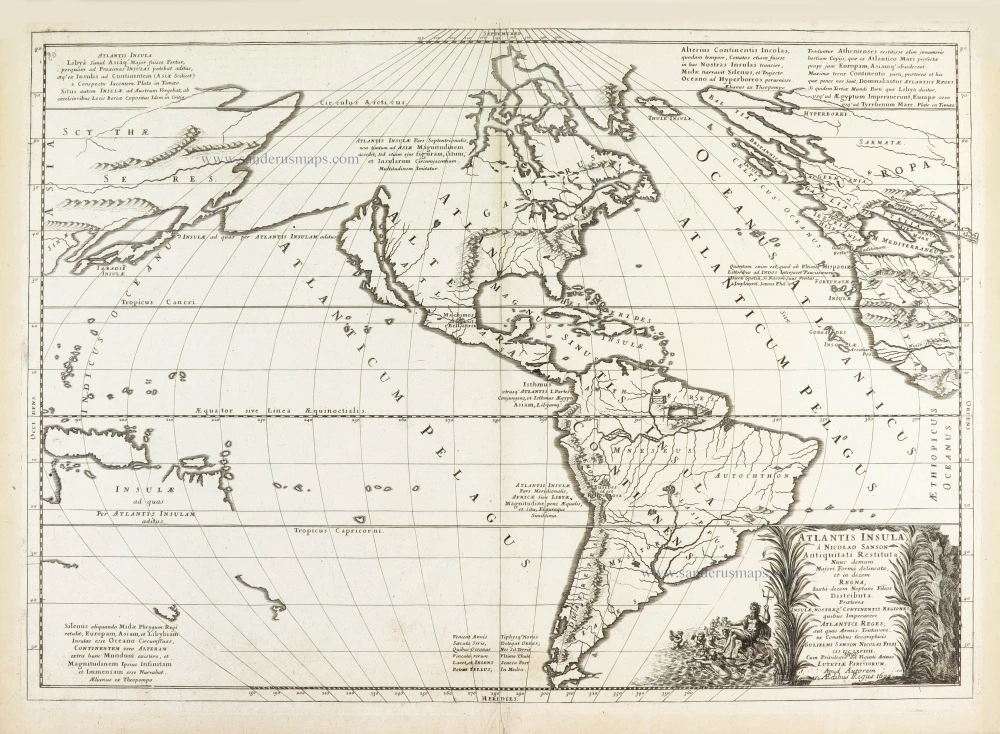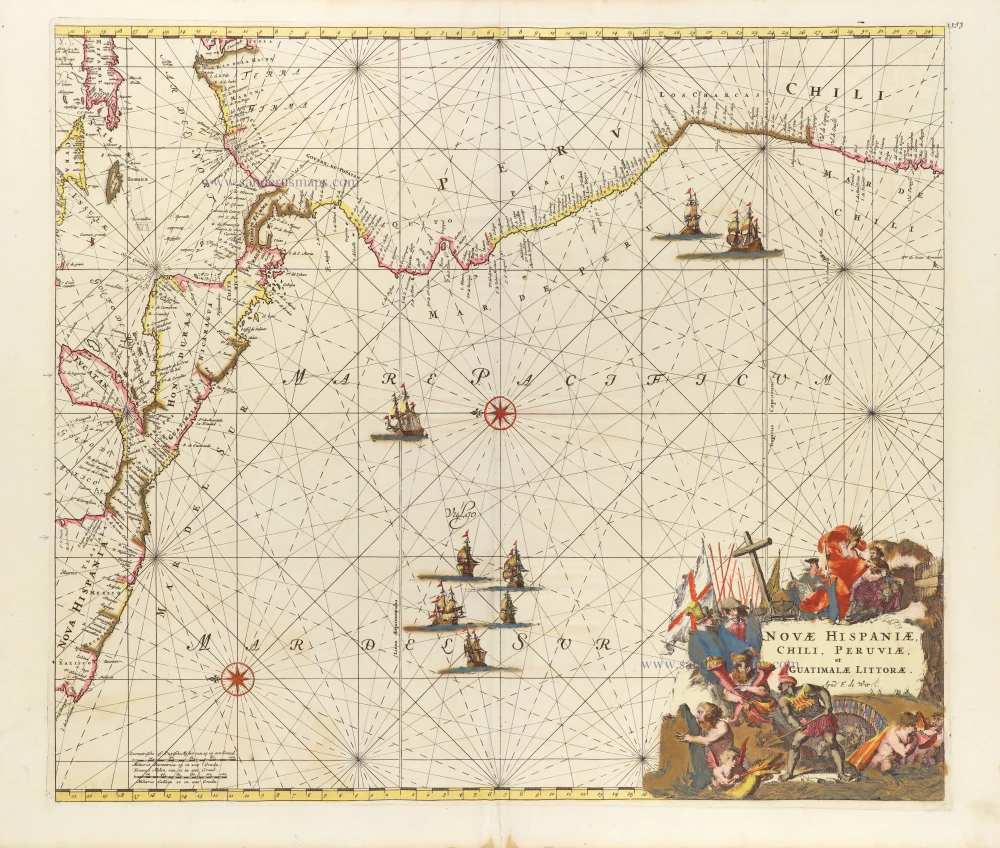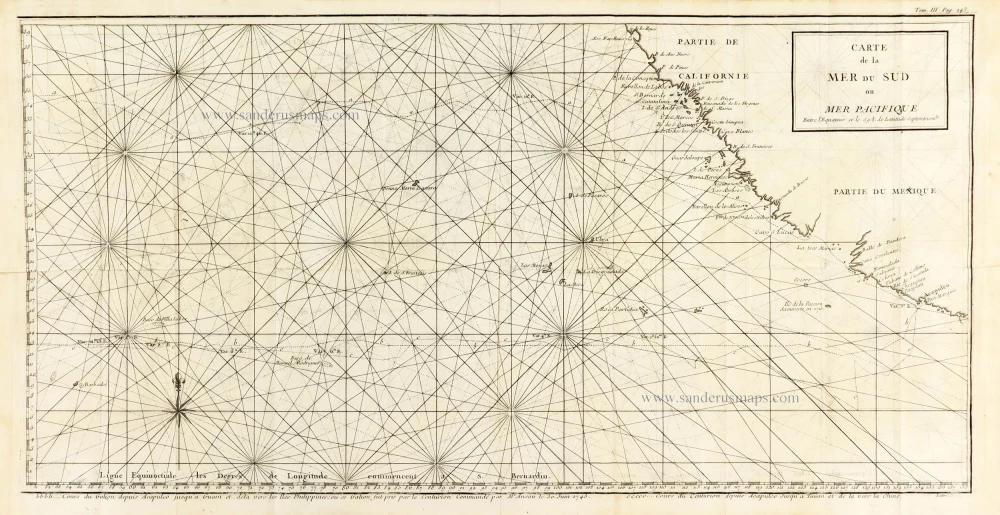Pacific Ocean, by Frederick de Wit. c. 1680
This map shows California as an island and Oceania: Australia, Van Diemens Land and New Zealand.
The map also displays information from Tasman's two voyages in 1642-3 and 1644 and the discoveries by the Dutch on the northern coast of Australia and New Guinea reflecting the prevailing opinion that the two were connected.
One of the earliest obtainable sea charts of the Pacific Ocean.
Frederick de Wit (1630-1706)
The engraver and map-seller, Frederick de Wit, was born in Gouda (Netherlands) in 1630 as a son of Hendrick Fredericksz de Wit. Through his marriage with Maria van der Waag of Amsterdam in 1661, he obtained citizenship of the city where he had been working since 1648 and where he became one of the most famous engravers of maps of the second half of the 17th century. Although De Wit was a Catholic, which meant that he was not favoured at the time by the city council, he was awarded the honour of being listed as one of the "excellent citizens" on the roll of the city council in the years 1694-1704. However, his name was not written in the Guild of St. Luke book before 1664. At that time, he lived on the Kalverstraat "in de Witte Pascaert", where he stayed until his death in 1706. His earliest dates on maps engraved are 1659 (Regni Daniae) and 1660 (World map).
Frederick de Wit published several world atlases, a sea atlas, and an atlas of the Netherlands.
The dating of the maps is difficult. However, as a privilege was granted in 1689, the annotation 'cum privilegio' marks an edition after 1688.
Around 1700, Frederick de Wit entered the market with a town atlas. He produced two volumes with a total of 260 plans and views. Most were printed from plates used for Janssonius and Blaeu town atlases.
After he died in 1706, his widow continued the shop until 1709. The plates and stock of De Wit's atlas were sold to Covens & Mortier in 1710, who sold the atlas for an extended period.
Magnum Mare del Zur cum Insula California = De Groote Zuyd-Zee en 't Eylandt California.
Item Number: 29241 Authenticity Guarantee
Category: Antique maps > America > North America
Old, antique sea chart of the Pacific Ocean, with insular California, by Frederick de Wit.
Title: Magnum Mare del Zur cum Insula California = De Groote Zuyd-Zee en 't Eylandt California.
Gedruckt 't Amsterdam by Frederick de Wit inde Calverstraet.
Engraver: Romeyn de Hooghe.
First State.
Date of the first edition: c. 1671-76.
Date of this map: c. 1680.
Copper engraving, printed on paper.
Map size: 500 x 575mm (19.69 x 22.64 inches).
Sheet size: 540 x 645mm (21.26 x 25.39 inches).
Verso: Blank.
Condition: Original coloured, partially backed with archival paper, minor repair at the bottom of the cartouche.
Condition Rating: A
From: Orbis Maritimus ofte Zee Atlas. Amsterdam, c. 1680.
This map shows California as an island and Oceania: Australia, Van Diemens Land and New Zealand.
The map also displays information from Tasman's two voyages in 1642-3 and 1644 and the discoveries by the Dutch on the northern coast of Australia and New Guinea reflecting the prevailing opinion that the two were connected.
One of the earliest obtainable sea charts of the Pacific Ocean.
Frederick de Wit (1630-1706)
The engraver and map-seller, Frederick de Wit, was born in Gouda (Netherlands) in 1630 as a son of Hendrick Fredericksz de Wit. Through his marriage with Maria van der Waag of Amsterdam in 1661, he obtained citizenship of the city where he had been working since 1648 and where he became one of the most famous engravers of maps of the second half of the 17th century. Although De Wit was a Catholic, which meant that he was not favoured at the time by the city council, he was awarded the honour of being listed as one of the "excellent citizens" on the roll of the city council in the years 1694-1704. However, his name was not written in the Guild of St. Luke book before 1664. At that time, he lived on the Kalverstraat "in de Witte Pascaert", where he stayed until his death in 1706. His earliest dates on maps engraved are 1659 (Regni Daniae) and 1660 (World map).
Frederick de Wit published several world atlases, a sea atlas, and an atlas of the Netherlands.
The dating of the maps is difficult. However, as a privilege was granted in 1689, the annotation 'cum privilegio' marks an edition after 1688.
Around 1700, Frederick de Wit entered the market with a town atlas. He produced two volumes with a total of 260 plans and views. Most were printed from plates used for Janssonius and Blaeu town atlases.
After he died in 1706, his widow continued the shop until 1709. The plates and stock of De Wit's atlas were sold to Covens & Mortier in 1710, who sold the atlas for an extended period.

